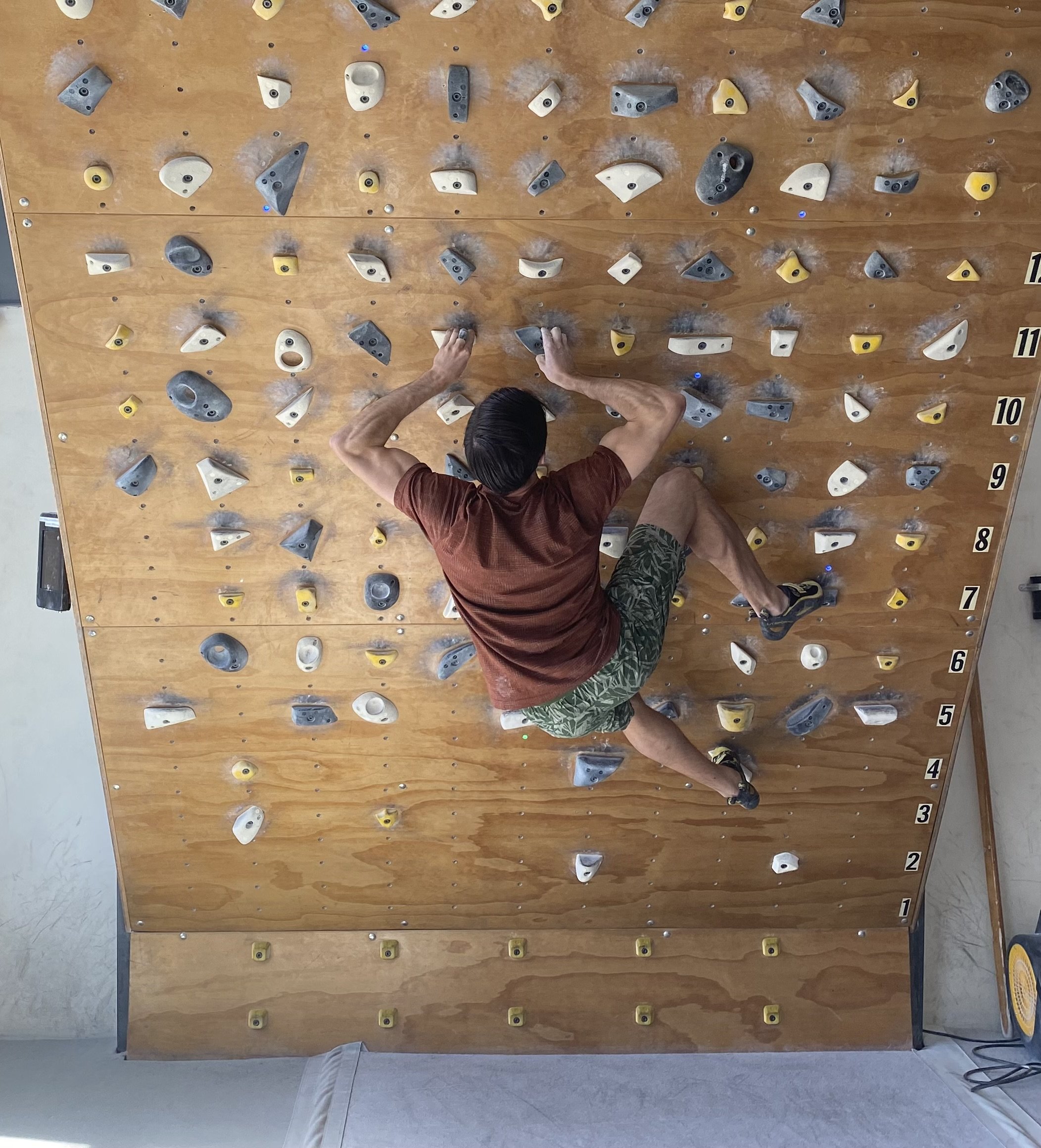“Chicken-winging” is a movement that every climber experiences. It is defined as a pattern of movement where the elbows raise to the sides instead of being tucked down closer to the chest. This compensation shows up when we’re fatigued and climbing near our limit. We all get told to avoid this position but many of us do not understand why it happens and if it’s truly bad for you.
There are two main reasons climbers chicken-wing:
1. Fatigue/weakness in the finger flexors
2. Fatigue/weakness of the scapular retractor muscles.
Let’s talk about the fingers first. The finger flexors are the single most important muscle group for climbing performance. Our fingers inevitably fatigue as we continue to climb or boulder near our limit, so our body will start to pull from different areas of the body to get whatever other strength is available. One way to slightly improve the function of the finger flexors is to increase the engagement of the finger extensors. Try this on your own: while keeping your fingers relaxed, cock your wrist backward (toward the back of the hand). You will see that your fingers curl slightly (especially if you have tight forearms!). The technical term for this is tenodesis and that little extra curl of the fingers can assist in crimping and can sometimes be the different between sending and falling.
Is it bad for you? This position can change the direction of force on the fingers and can put undue stress on the wrist, fingers, elbow and shoulder. But this doesn’t necessarily put you at injury risk.
Mend Recommendation: improve the strength and fitness of your fingers using a hangboard and regimented training program which will allow you to climb harder, longer without needing to chicken-wing. Do your best to avoid the chicken-wing position while climbing, but it is ok to use in moderation.
Now let’s talk about the shoulder. The primary stabilizer muscles of the scapula during climbing are the upper/middle/lower trapezius and rhomboids, while the primary stabilizers of the shoulder joint are the rotator cuff muscles. When these muscles are strong and not fatigued, they work to maintain the scapula and glenohumeral joint in an optimal position while climbing. As they get fatigued our bodies often compensate by increasing the utilization of the upper trapezius, levator scapula, and deltoid muscles. When this happens the elbows elevate and the chicken-winging begins!
The chicken-wing position can be aggravating to some climbers with shoulder pathology. Shoulder abduction or flexion with combined internal rotation (which is exactly what the chicken wing position is) causes compression of the supraspinatus muscle in the subacromial space. In some cases this can lead to rotator cuff tendinopathy and/or shoulder impingement syndrome.
Mend Recommendation: strengthen the muscles of the rotator cuff and scapular stabilizers (primarily middle and lower trapezius) to allow you to climb harder, longer without needing to chicken-wing. Do your best to avoid repetitive stresses of the shoulder in this position while climbing.
If you’re having difficulty avoiding chicken-winging, schedule a free consultation with the physical therapists and sports medicine experts at Mend in Boulder, CO. Our orthopedic specialists understand the unique stresses of climbing and can create a personalized program to help correct your individual movement patterns.

